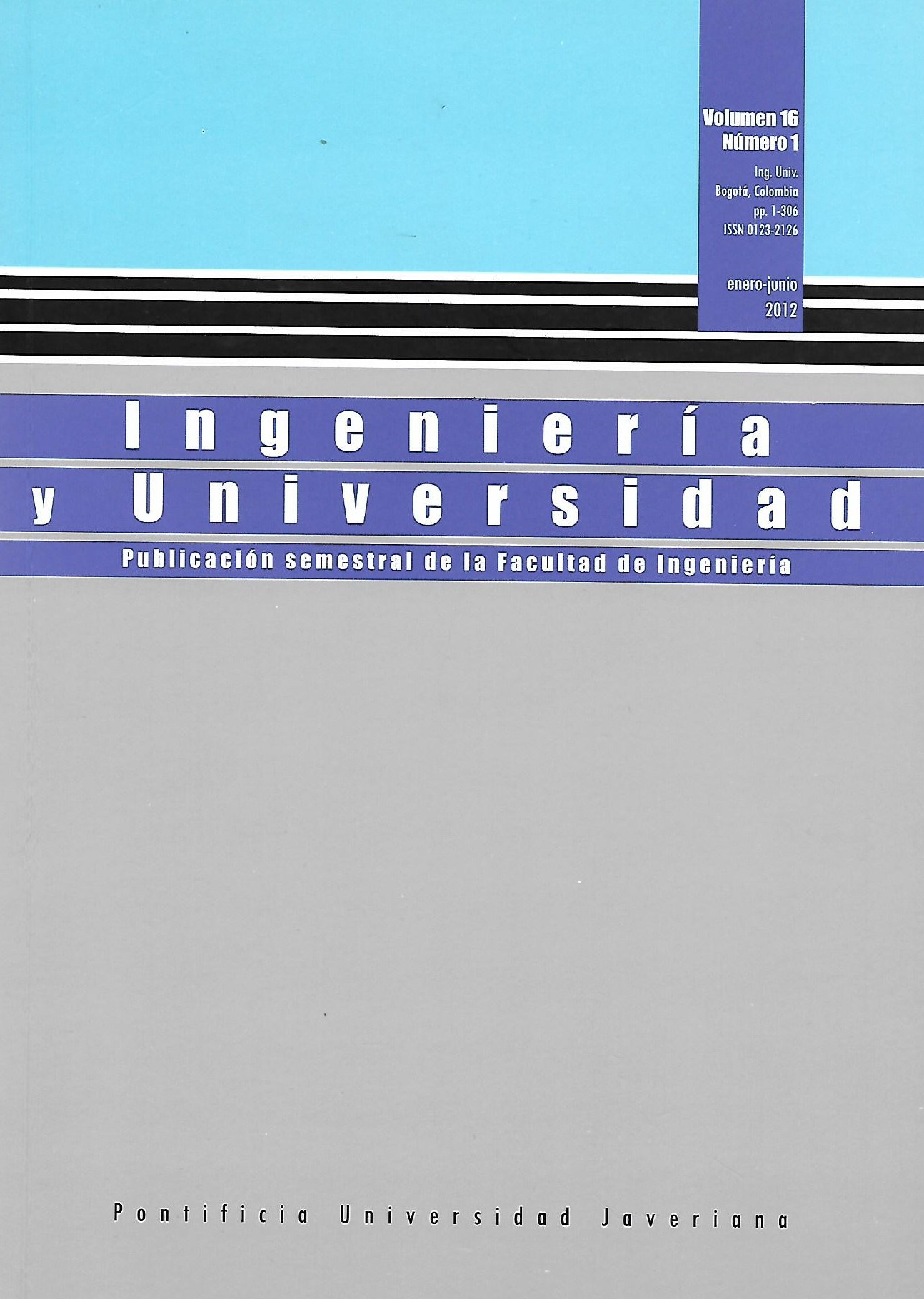Abstract
Biophysical and socioeconomic data were gathered at the basin of the Otun River (Colombia) and then processed with the objective of identifying relationship patterns between the two types of information. This task was carried out by using Geographic Information Systems software (ArgGis 9.1 ®), the development of a code for the assessment of relationships (Matlab 7.1®), and data mining tools based on trees; using the J-48 algorithm developed at the Waikato Environment for Knowledge Analysis (WEKA). The identification of patterns allowed concluding that, at least, three physical variables (altitude, rainfall and temperature) and a socioeconomic variable (land use) influence the presence of mammals. This information will be employed in other studies related to Decision Support Systems in the real of management and conservation of wildlife at the basin.
FRIMPONG, E. A.; ROSS-DAVIS, A. L.; LEE, J. G. y BROUSSARD, S. R. Biophysical and socioeconomic factors explaining the extent of forest cover on private ownerships in a Midwestern (USA) agrarian landscape. Landscape Ecology. 2006, vol. 21, pp. 763-776.
HERNÁNDEZ, J.; RAMÍREZ, M. y FERRIA C. Introducción a la minería de datos. Madrid: Pearson Educación, 2004.
Jiménez , G. Construcción de un marco conceptual y metodológico para estrategias en manejo y conservación de la biodiversidad en paisajes fragmentados colombianos. 309-329 En: Rodríguez Rodríguez, J. (Ed.). Elementos para una teoría del desarrollo territorial. Manizales: Universidad Autónoma de Manizales, 2010.
JIMÉNEZ, G. Estrategia metodológica para el diseño y evaluación de corredores biológicos: un estudio en Costa Rica. En: Polanco-Ochoa, R. (Ed.). Manejo de fauna silvestre en Amazonía y Latinoamérica. Bogotá: Fundación Natura, 2003, pp. 103-107.
JIMÉNEZ, G. Propuesta metodológica en el diseño y evaluación de un corredor biológico en la reserva forestal Golfo Dulce, Costa Rica. Trabajo de posgrado, Centro Agronómico Tropical de Investigación y Enseñanza CATIE, Programa de Educación para el Desarrollo y la Conservación, 2000.
KANTARDZIC, M. y ZURADA, J. (Eds.). Next generation of data-mining applications. s. l.: Chapman and Hall, 2006.
LIU, J. Integrating ecology with human demography, behavior, and socioeconomics: Needs and approaches. Ecological Modelling. 2001, vol. 140, pp. 1-8.
LIU, J.; DIETZ, T.; CARPENTER, S. R.; ALBERTI, M.; FOLKE, C. et ál. Complexity of coupled human and natural systems. Science. 2001, vol. 317, núm. 5844, pp. 1513-1516.
LIU, J.; OUYANG, Z.; TAYLOR, W. W.; GROOP, R.; TAN, Y. y ZHANG, H. A framework for evaluating the effects of human factors on wildlife habitat: the case of giant pandas. Conservation Biology. 1999, vol. 13, núm. 6, pp. 1360-1370.
LOW, B.; CONSTANZA, R.; OSTROM, E.; WILLSON, J. y SIMON, C. P. Human ecosystem interactions: a dynamic integrated model. Ecological Economics. 1999, vol. 34, pp. 227-242.
MACKEY, B. y LINDENMAYER, D. Towards a hierarchical framework for modeling the spatial distribution of animals. Journal of Biogeography. 2001, pp. 1147-1166.
MITCHELL, T. Machine learning. New York: McGraw Hill, 1997.
PÉREZ, C. Minería de datos: técnicas y herramientas. Madrid: International Thomson, 2007.
PRIMACK, R.; ROZZI, R.; EISINGER, P.; DIRZO, R. y MASSARDO, F. Fundamentos de conservación biológica: Perspectivas latinoamericanas. México: Fondo de Cultura Económica de México, 2001.
RICKLEFS, R. E. y MILLER, G. L. Ecology. 4th Ed. New York: W.H. Freeman, 2000.
ROJAS, C. Introducción a la gestión integrada de recursos hídricos [documento en línea]. <http://publicacion05.unipamplona.edu.co/hidroinformatica/portal/home_1/rec/arc_707.pdf> [Consultado: 1-11-2008].
RUIZ, D. Heurísticas de selección de atributos para datos de gran dimensionalidad [documento en línea]. 2006. <http://www.lsi.us.es/docs/doctorado/tesis/tesisRoberto.pdf> [Consultado: 20-10-2008].
SALAFSKY, N.; MARGOLUIS, R.; REDFORD, K. H. y ROBINSON, J.G. Improving the practice of conservation: a conceptual framework and research agenda for conservation science. Conservation Biology. 2002, vol. 16, núm. 6, pp. 1469-1479.
SOULÉ, M. E. Conservation tactics for a constant crisis. Science. 1991, vol. 253, pp. 744-750.
ZHANG, X.; KING, M. L. y HYNDMAN, R. J. Bandwidth selection for multivariate Kernel density estimation using MCMC [documento en línea]. 2004. <http://repec.org/esAUSM04/up.1603.1077410300.pdf> [Consultado 10-11-2008].
This journal is registered under a Creative Commons Attribution 4.0 International Public License. Thus, this work may be reproduced, distributed, and publicly shared in digital format, as long as the names of the authors and Pontificia Universidad Javeriana are acknowledged. Others are allowed to quote, adapt, transform, auto-archive, republish, and create based on this material, for any purpose (even commercial ones), provided the authorship is duly acknowledged, a link to the original work is provided, and it is specified if changes have been made. Pontificia Universidad Javeriana does not hold the rights of published works and the authors are solely responsible for the contents of their works; they keep the moral, intellectual, privacy, and publicity rights.
Approving the intervention of the work (review, copy-editing, translation, layout) and the following outreach, are granted through an use license and not through an assignment of rights. This means the journal and Pontificia Universidad Javeriana cannot be held responsible for any ethical malpractice by the authors. As a consequence of the protection granted by the use license, the journal is not required to publish recantations or modify information already published, unless the errata stems from the editorial management process. Publishing contents in this journal does not generate royalties for contributors.


